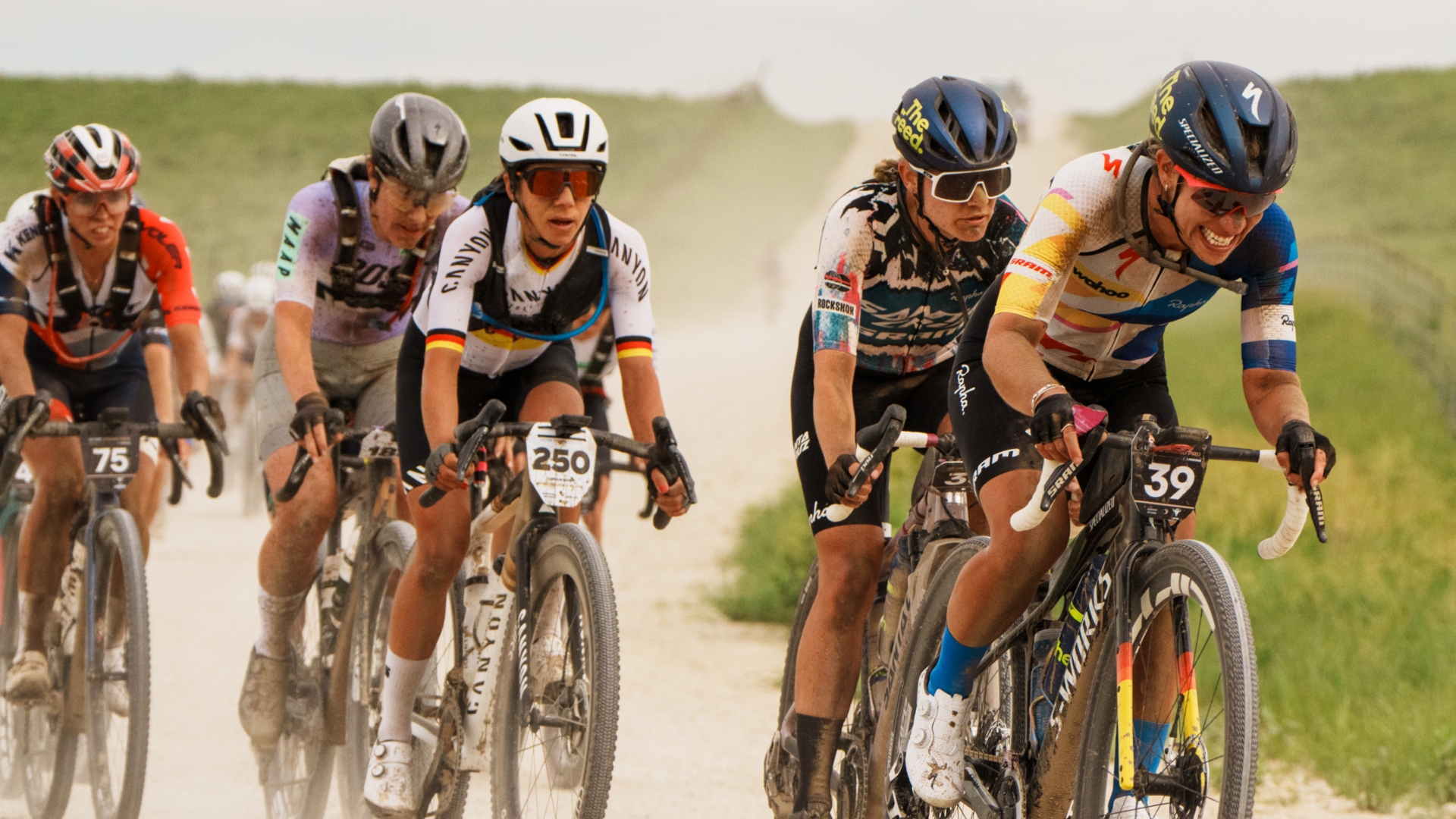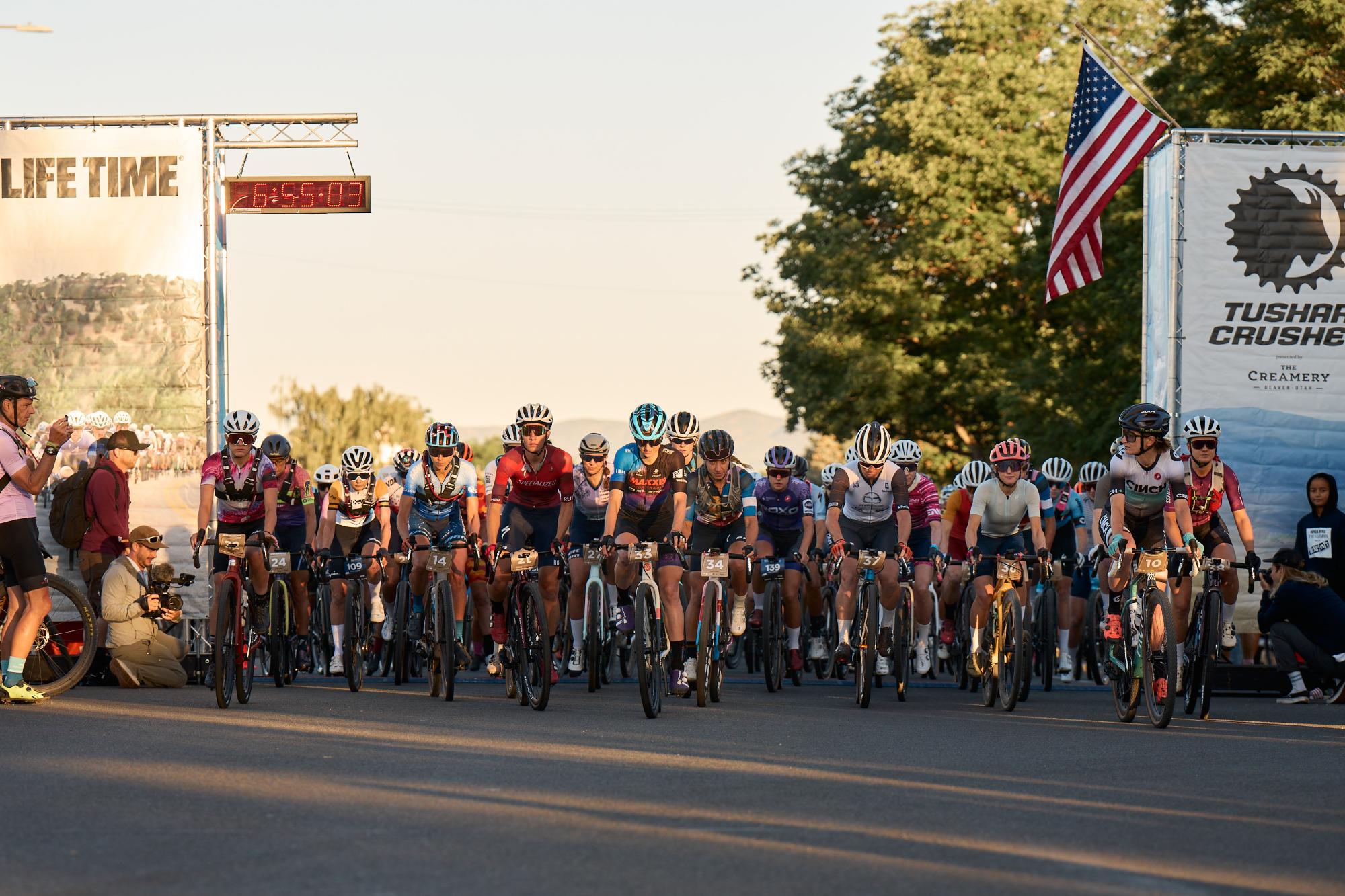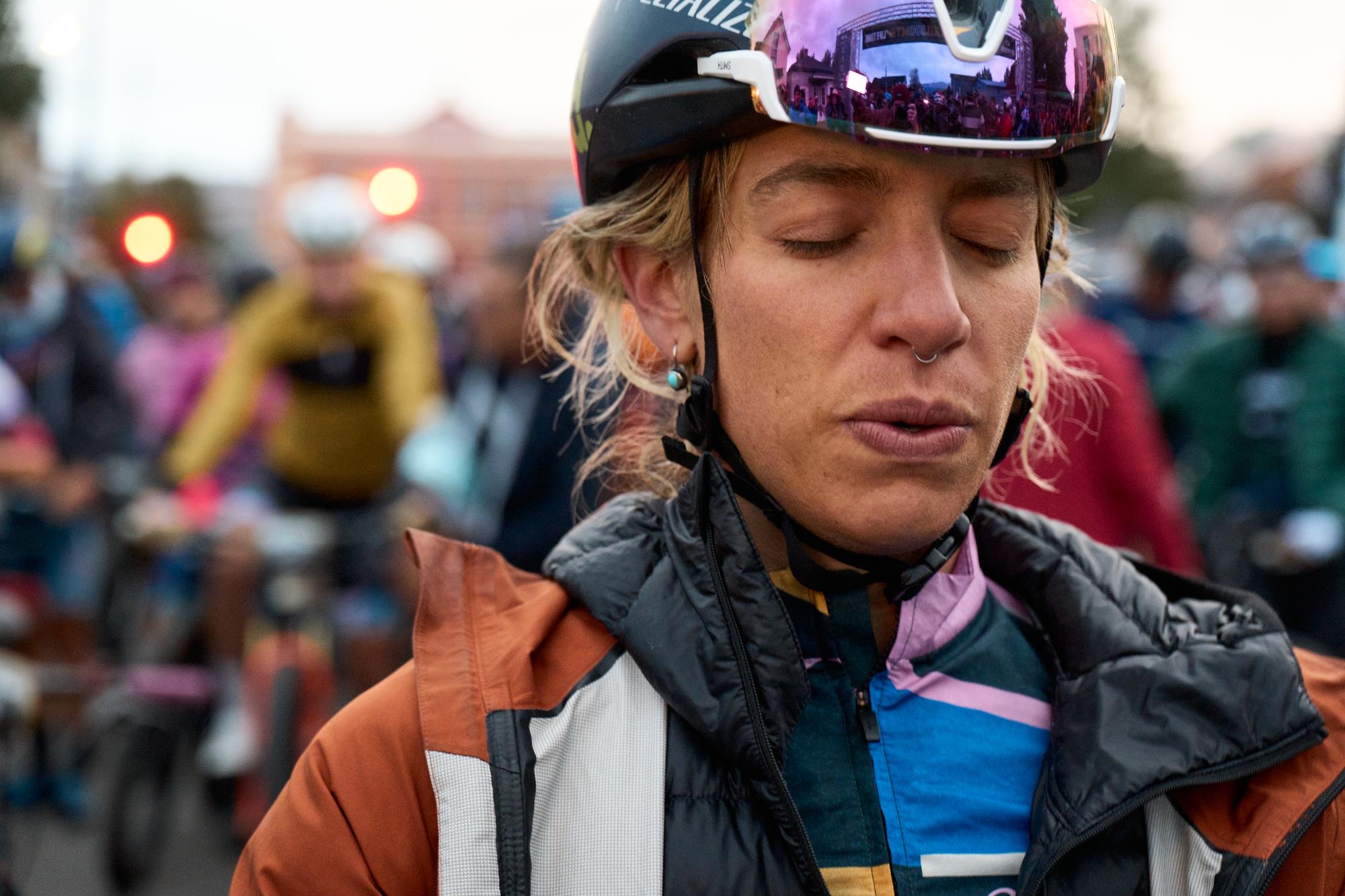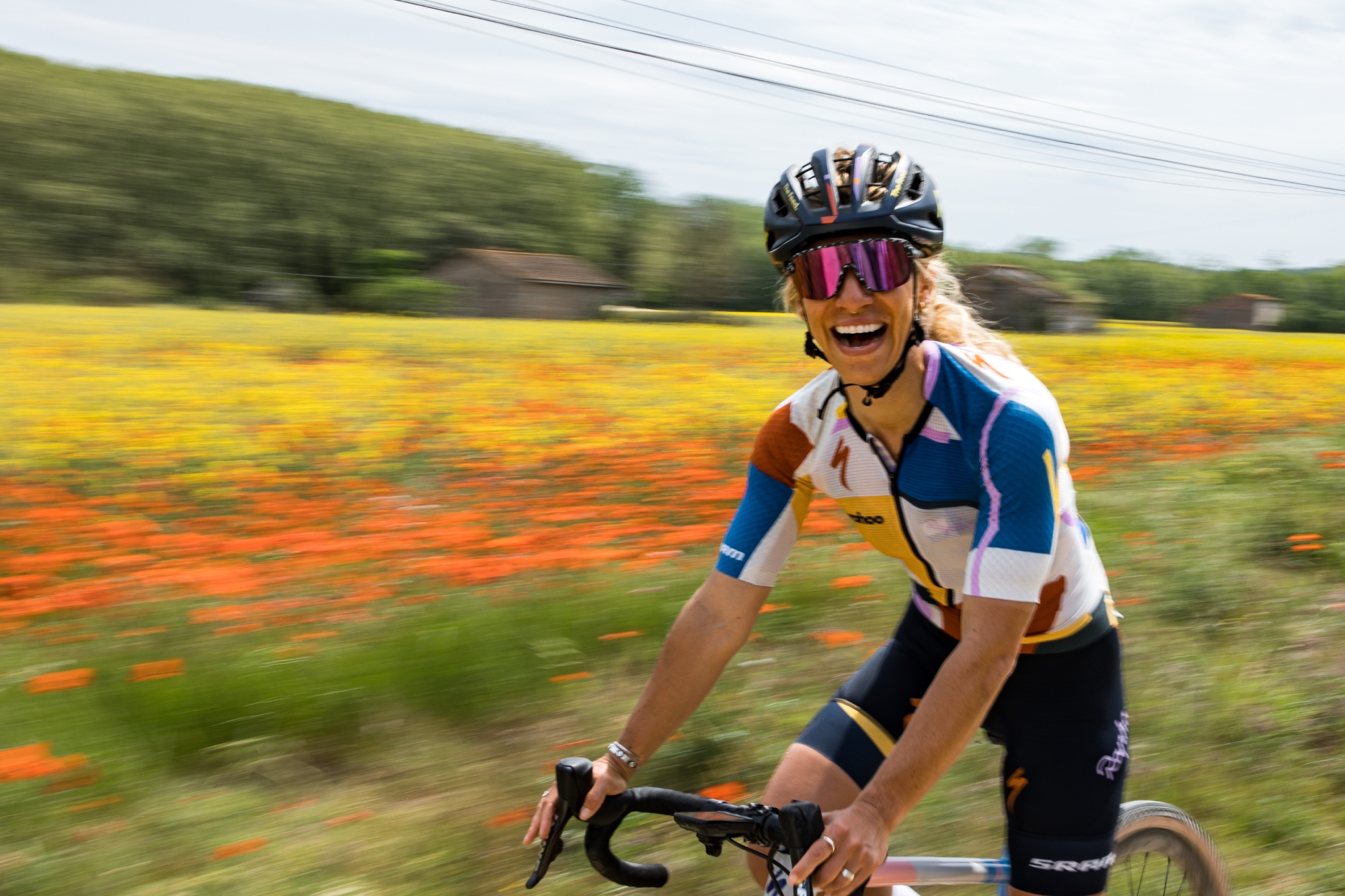
Please welcome Cycling Weekly's newest columnist, Sarah Sturm. Sarah Sturm is a professional American off-road racer known for her performances in the Life Time Grand Prix series, Unbound 200, Traka, Migration gravel and more. Beyond being a talented racer, Sturm is a beloved figure in the community, known for her infectious energy, vibrant personality, and commitment to growing the sport for future generations.
We're thrilled to have Sarah share her wealth of knowledge, experience and passion for the off-road disciplines with our readers. Every month, she’ll be offering a unique perspective on all things gravel, so be sure to check back. Have a topic you'd love to see covered? Drop us a line in the comments below or reach out via email at anne.rook@futurenet.com.
Gravel has been through a lot in the last seven years. We’ve seen participation soar, rules change, tyre widths grow and prize purses become lucrative. From when I first entered the professional world of off-road racing in 2019 until today, it almost feels like it’s a different sport. I went from packing my jersey pockets with PB&J sandwiches and hoping for the best to carefully accounting for every carb that enters my body during a race and following a specific race plan. That’s all to say: things have evolved quickly, and part of that is due to one series in particular —the Life Time Grand Prix.
Three years of Life Time Grand Prix

The Life Time Grand Prix was introduced in 2022 as a first-of-its-kind blend of gravel and cross-country mountain bike racing. It aimed to drum up cycling fandom outside of the European WorldTour bubble. The interest in American mountain biking, cyclocross and road racing had been eeking down a dwindling path for some time. Yet, gravel cycling was on the rise, and Life Time seemed to be perfectly positioned to capitalise.
Beyond its financial appeal, the Grand Prix was created with cycling fandom in mind. It was the brainchild of Kimo Seymour, a longtime cycling fan and executive at Life Time. Having witnessed the decline of American bike racing, Seymour longed for the excitement it once brought to the U.S. During his recovery from a near-fatal illness, he found himself with some unexpected free time—and that’s when the gears started turning.
Seymour was seeing people flock to gravel events all over the country, but these races didn’t really lend themselves to spectatorship or fan engagement. So he devised a plan. One series, six races, a big ole prize purse to lure in top-end athletes, media attention and –the cherry on top– exclusivity.
People love to hate on the Grand Prix. They criticise the limited field and the fact that riders had to apply and submit their social media as credentials. There’s also the general mocking of the gravel discipline’s legitimacy. And other events certainly were not pumped about the new series taking over everyone's calendars.
Still, there’s no denying that the series has brought a lot to the sport: new viewers, sponsors, athletes and maybe even some profit for the events and riders alike. And yet, I, a two-time series podium finisher, have decided to not return in 2025. Here’s why.
The realities of being a Life Time Grand Prix racer

When I decided to not race the series in 2025, there wasn’t a big dramatic moment. There were no tears shed, no sponsors lost, not even any hard feelings. Yet it wasn’t an easy decision, either.
During the 2024 season, I learned that it’s not fun to race and finish outside of the top 5 — or worse, outside the top 10. Surprisingly, it wasn’t super fun to be in the top 5, either. In the end, I wasn’t having as much fun as I could be. And when I say ‘fun’, I wasn’t looking for a Chappell Roan concert level of fun, I just wanted to do something exciting, motivating and fulfilling.
Here is how it feels to be in the Grand Prix:
Seven months of pressure
When you send in your application, you’re signing up for almost seven months of constant stress and pressure — if not externally, then certainly internally, and usually both. You might be thinking, “Yeah, duh, that’s what you sign up for as an athlete,” and you’d be right. But it's not the same as the pressure of an individual race. This is the constant, season-long anxiety that even if you podium or win a race, you could still lose ground in the overall standings. It amplifies the feeling of being "only as good as your last race," and it does so publicly.
I’ve compared notes with MTB World Cup athletes to see if they experience the same feeling. Like the Grand Prix, they compete within an overall series ranking but they prioritise individual races. Winning a World Cup event holds far more significance than finishing 5th in the overall standings, with the overall ranking being viewed as a bonus. One could also approach the Grand Prix in a similar fashion, but the challenge is that not all races hold equal value as they do on the World Cup circuit. For example, a win at Unbound or Leadville can be career-defining, while victories at Sea Otter or Chequamegon carry less significance. As a result, the series ranking does hold considerable value in the eyes of sponsors, media, and others, as it recognises consistent top-5 finishes.
For me, that overall running tally took away from individual achievements throughout the year. I stood on the podium at Unbound yet ended up disappointed with my fourth place in the series. It put a shadow on success for me.
This year, I will still race Unbound, Leadville and maybe one more Grand Prix event as I really enjoy the events themselves. I just want to race them without the overall looming over my head.
Money worries
If race results don’t stress you out, the financials of being a gravel privateer will. When you’re accepted into the Life Time Grand Prix series, it’s still on you to haul yourself yourself and any mechanic help to the start of the races. Travel, lodging, nutrition, equipment – it’s all on you. So for many, the money –be it prize payouts, sponsor bonuses, etc– is a huge motivator to enter the Life Time Grand Prix, especially for younger athletes trying to break into the sport and secure sponsorship. I am not immune to those stressors either, but I have positioned myself well and my sponsors pay for all of my expenses. The vast majority of my income comes directly from sponsorship deals rather than payouts from races.
The series and nothing else
Here is a hot tip on how you win the LTGP: you make it your only focus for the entire season. Don’t think about another series, a big stage race or even a one-day race. A season packed with six or seven LTGP races is plenty.
If you want to perform well, you’re dedicating weeks, or even months, ahead of a race to fine-tuning for that particular event. After the race is over, you’re going to need a couple of weeks of recovery before starting up for the next event. It really takes over your life.
If you’re a psychopath like me, you’ll convince yourself that doing two series in one season is a great idea, with some European and African races added to the mix. Everyone will tell you not to be disappointed if you don’t do well in the overall rankings. You may even convince yourself that you don’t care, and then you’ll inevitably prove yourself wrong and become extremely disappointed.
After a few seasons of this, I grew both bored and stressed out. And that combination of emotions can really wear on you.
Decision time

Fast forward to decision time. It’s October 2024, the week of my wedding, and I’m glueing pieces of cardboard together for a Halloween costume when I was texting Kimo Seymour. The application deadline was fast approaching, and I had left the decision to the very last moment - again. Those close to me know that decisions are really not my strong suit, and the stress from planning my wedding was running high. So, I applied.
Yet, on the eve of the 2025 roster announcement, I texted Kimo yet again and said I was out, and to please give my spot to someone else. And he responded, “Thank you. We love you and will want you back…unless you get really slow (laughing emoji). Some lucky rider is going to get a chance she wouldn’t have.”
And that was it, I actually left.
I know it was the right call for me. I need the freedom to do some other things in my career, and to take advantage of being an independent off-road racer. My sponsors support me, I’m established in my career, and my best years are still ahead.
The Life Time Grand Prix will always be a part of my story as an athlete; the series has helped me appreciate and become a top elite racer. The level and quality of competition at the Grand Prix races is still unmatched by most races in the U.S. For the athletes, it’s an amazing opportunity to get to push yourself at the top level, over and over again. I’m curious if that’s the thing I’ll miss the most and if I’ll come running back. Only time will tell.







